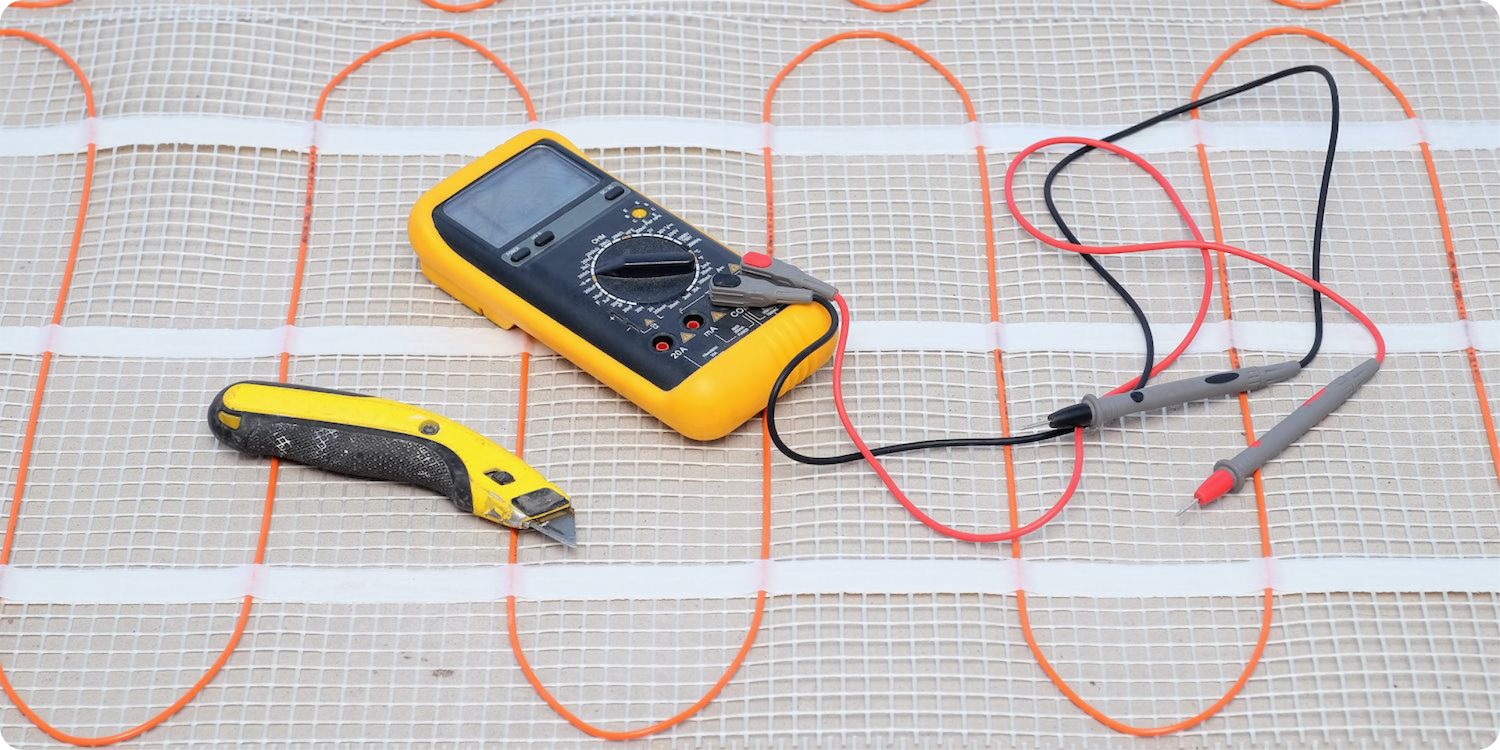The All-Inclusive Guide To Electric Floor Heating
Electric floor heating is a great home improvement that adds significant comfort to your living space and keeps your toes warm. It is also not that difficult to install, nor very expensive, however it can rather increase your electricity bill.
The National Electrical Code released by the NFPA has certain requirements when it comes to the installation of cables under floor coverings, within Chapter 4, Article 424.45. However, professional installation is required for electric radiant floor heating, and your electrical contractor should be up to date with the NEC requirements.
The way radiant floor heating systems work is that pipes or wires running beneath the surface flooring warm up a room by gently radiating heat upwards. It’s a great idea for room additions, where it may prove difficult to extend your HVAC system. The electric floor heating systems are also good for surface flooring that’s naturally cool to the touch, such as concrete, stone, and ceramic tiles. They work really well in tall or large rooms, where heat is mostly needed at the floor level, as well as in rooms you would normally walk barefoot, such as your bathroom.
What Is Electric Radiant Floor Heating?
As mentioned above, electric underfloor heating is a system of electrical wires, installed under the surface of your floors. When electricity flows through them, these wires become hot. The network of wires can be laid under a wooden floor or cast into a concrete floor, very similar to water-based underfloor heating.
Typically, the wires are attached to a net, which are called mats, and are anywhere between 2 and 4 mm thick. These electric mats are rolled out under the floor in the spaces you want the heat to be.
The wire mesh or loops of individual wires run across the surface beneath the floor and warm up the room through natural resistance, which occurs when electricity flows through the metal wires. It is in no way a modern or new concept, since radiant floor heating existed all the way back to ancient Rome. The Romans had a system of tunnels beneath the stone floors of many public buildings that circulated warm air, heated by wood-burning fires.
The modern electric radiant floor heating uses thin heating cables that are operated by 15 or 20-Amp circuits, which are usually controlled by a thermostat mounted on the wall. It’s one of the most common home improvements people choose during a remodel. The electrical mats are laid across the subfloor and can be cut to fit irregular spaces, but it’s generally recommended to use full-sized mats. In an ideal scenario, they would cover the entire floor, but you can also confine the heating to any areas you’d like.
Why Invest In Floor Heating?
There are many reasons why underfloor heating is such a popular remodel improvement. As mentioned earlier, it’s not a very expensive project either. Check out below the main reasons you’d want to consider investing in electric floor heating.
- Affordable – If you’re putting it in during a remodel or while replacing your floors, underfloor heating can be inexpensive. The cost of such systems starts as low as $5 per square foot. Although they’re similar to hydronic underfloor systems, the electric version doesn’t require expensive water heaters or pumps.
- Comfortable – Underfloor radiant heating is definitely a comfortable home improvement. Walking on heated floors is a very luxurious feeling, especially in rooms where you’d walk barefoot like the bathroom or the bedroom.
- Clean & Safe – Since it’s not forced air, electric radiant floor heating is clean heat because it doesn’t circulate dust or other allergens. Additionally, most floor heating products have been tested and are cULus or cCSAus listed.
Pros & Cons of Electric Floor Heating
Pros of Electric Floor Heating | Cons of Electric Floor Heating |
| Can retain heat for a long time – especially when buried within thermal masses | Difficult to install retroactively as the floor coverings need to be removed |
| Aesthetically pleasing – a discreet way of heating, hard to detect even when it’s on | More expensive to operate for whole-home use rather than room use |
| Can reduce costs – floor heating can reduce the need of operating HVAC or space heaters | Difficult to locate and repair broken wires or short circuits |
| Easy to install | Less effective under carpet flooring or vinyl |
| Perfect for naturally cool surfaces, such as stone, ceramic tiles or concrete slabs. |
What Is The Cost of Electric Radiant Floor Heating?
Although in some areas, electric floor heating systems can start as low as $5 per square foot, you should expect to pay at least $8 per square foot in more affluent cities and areas. However, this is for materials only. If you want to estimate materials plus professional installation, then $16 is a safe bet.
Operating costs are dependent on where you are located and the cost of electricity in that area, but you could probably estimate anywhere between $0.50 and $1 a day for heating a standard bathroom that’s 8 x 10 feet. And this is based on running the system 24 hours a day. If you only operate it for about 8 hours, then the cost obviously goes down.
There are alternatives to electric floor heating systems, such as the hot water radiant floor systems. Instead of electrical wires, these use tubes of water that are heated by a central boiler, so hot water circulates under the floor. They’re more expensive than electric ones, and they are generally used in new constructions for whole-house heating systems.





